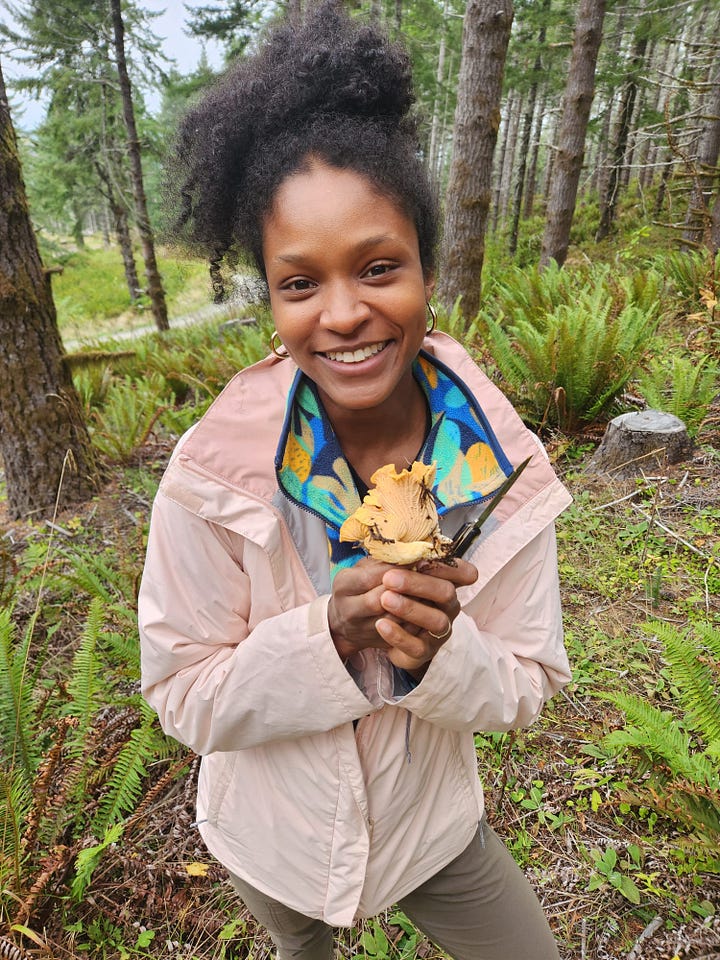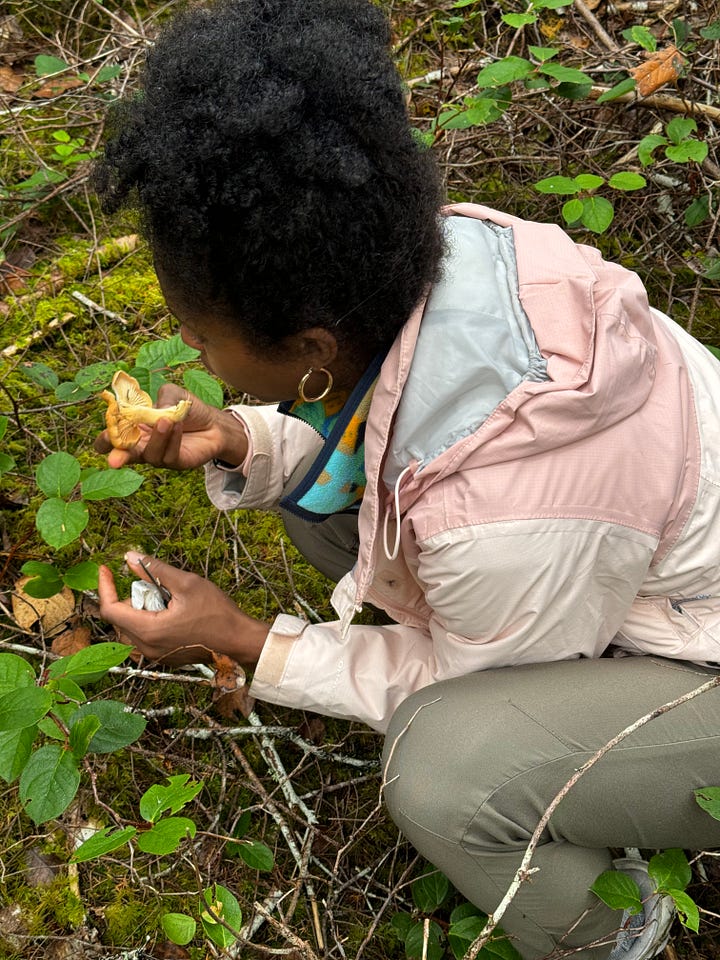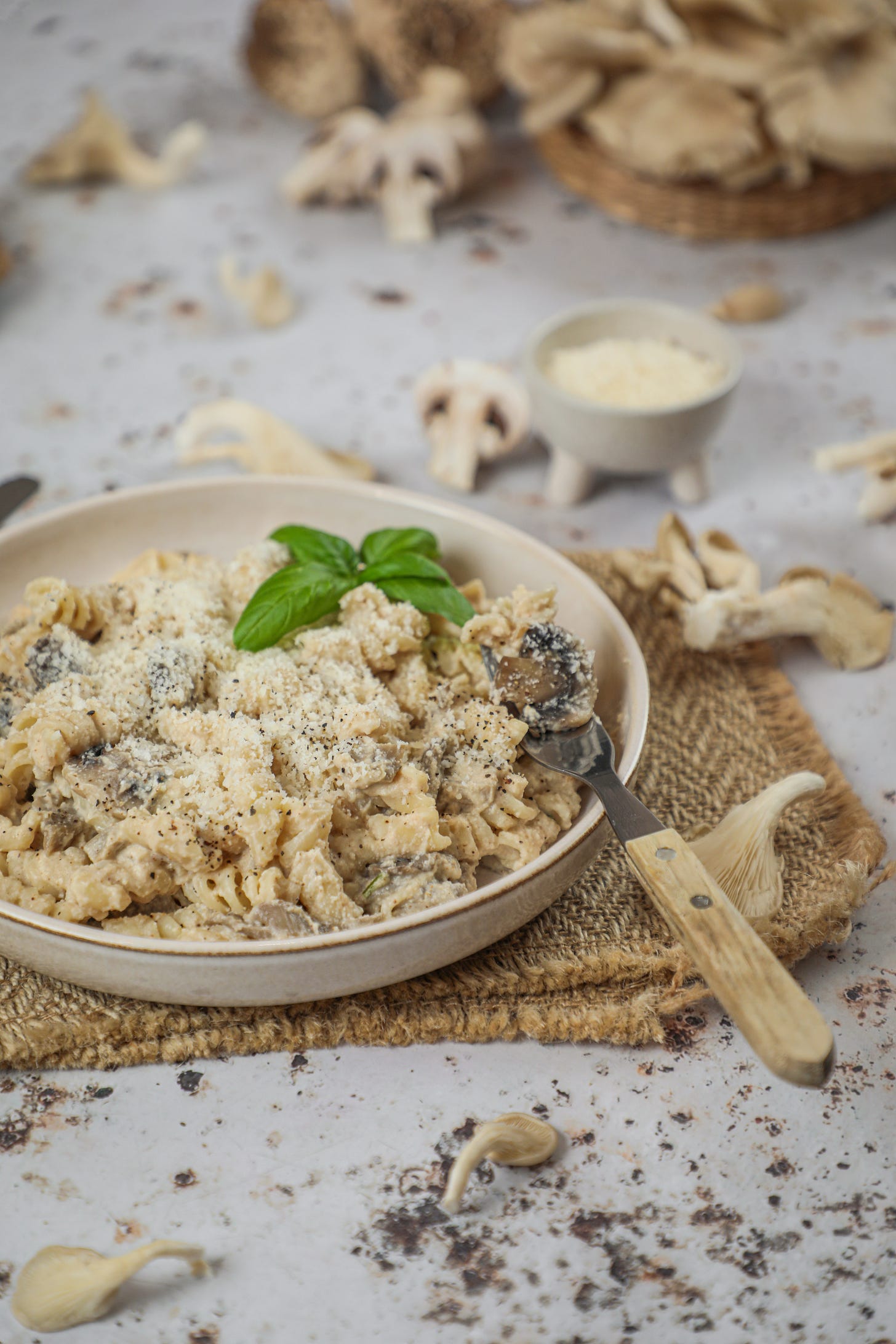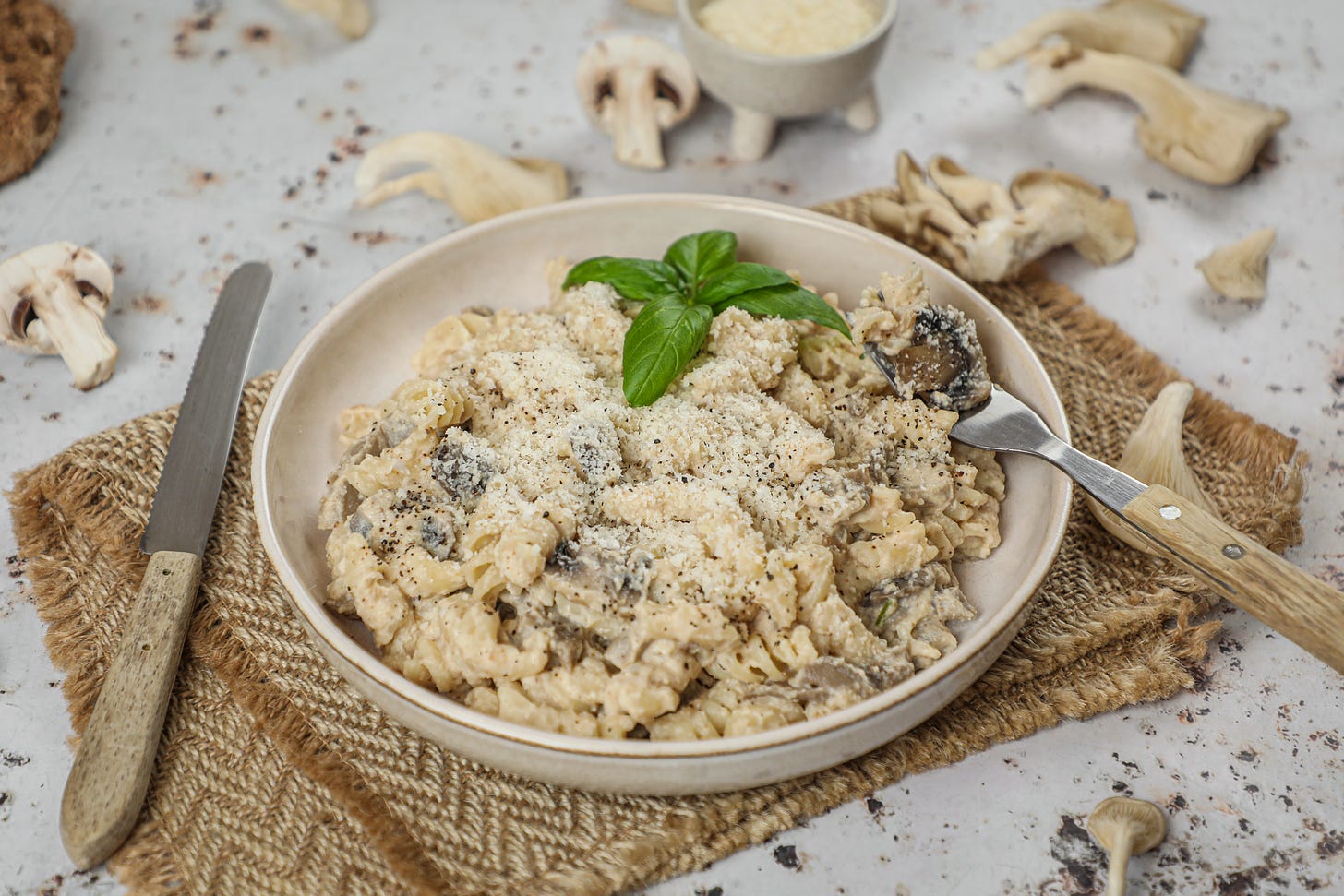Plant-Based Mushroom Alfredo
Exploring new flavors with seasonal ingredients—featuring creamy mushroom pasta and a foraging adventure.
The Story Behind the Dish
For my birthday last week, my fiancé surprised me with a day trip foraging through the Oregon woods, where a guide led us in search of chanterelle mushrooms. Wandering among towering trees and uncovering chanterelles on the forest floor, gave me a whole new appreciation for cooking with fresh, seasonal ingredients. I even used some of our foraged chanterelles to make this dish one afternoon, a favorite recipe I’ve returned to again and again this fall, and that experience made it taste even more special.


This recipe also reflects my recent experiments with cooking mushrooms and recreating cheesy flavors using plant-based ingredients. (If you're curious, I explored similar flavors in last week’s creamy broccoli soup, which follows some of the same principles.) Cheesy flavors come from a combination of umami (that deep, savory taste), subtle tanginess, and creamy texture. Here, miso and nutritional yeast provide the umami and slight acidity, while soaked sunflower seeds and macadamia nuts deliver the smooth, velvety feel we associate with cheese.
The cauliflower ties it all together, blending with the other ingredients to create a creamy base without overpowering the dish. The mushrooms add their own earthy depth, complementing the sauce. Together, these elements create a plant-based alfredo sauce that’s rich, satisfying, and entirely dairy-free. It’s perfect for fall evenings.
Recipe Overview
Prep Time: 15-20 minutes (plus soaking time for sunflower seeds and macadamia nuts)
Cooking Time: 35-40 minutes
Yields: About 8 cups of sauce (12 servings, ⅔ cup per serving)
Ingredients
For the Mushrooms:
If you’re using chanterelles, I recommend dry sautéing them first.
2 cloves garlic, minced
¼ cup white wine
1 tablespoon tamari (optional)
4 cups sliced mushrooms (reserve 1 cup for garnish)
1 onion, diced
Olive oil, for sautéing
For the Creamy Sauce:
This recipe makes extra sauce—use enough to coat the pasta to your liking and save the rest for another meal. It’s great on tofu and vegetables, whether steamed, sautéed, or roasted.
¼ cup sunflower seeds, soaked
½ cup macadamia nuts, soaked (substitute with additional sunflower seeds for a nut-free option)
1 onion, roughly chopped
4 cloves garlic, minced
Olive oil, for sautéing
¼ cup white wine
1 head of cauliflower, chopped
1 ½ cups almond milk (or water) for cooking the cauliflower
2 tablespoons miso paste
¼ cup nutritional yeast
½ cup almond milk (or water) as needed to adjust consistency
For the Pasta:
1 box (226 grams) lupini pasta or your favorite gluten-free/grain-free pasta (or use zucchini noodles or konjac noodles for a low-carb alternative)
Optional Garnish:
Reserved sautéed mushrooms
Fresh basil or parsley
Olive oil or truffle oil
Parmesan or a plant-based alternative
Let’s Cook!
Prep the Nuts:
Soak the sunflower seeds and macadamia nuts in warm water for at least 1 hour. Soaking softens them, improving texture and helping the sauce blend into a creamy consistency. For even better results, soak them longer or overnight if you have time.Sauté the Mushrooms:
In a large pan, heat olive oil over medium heat. Add the diced onion and sauté for about 10 minutes, stirring occasionally, until soft and translucent. Stir in the minced garlic and cook for 2 more minutes until fragrant. Add the tamari and stir to combine.Cook the Mushrooms:
Add the sliced mushrooms to the pan. Sauté until they are golden brown and tender, about 8-10 minutes. Once the mushrooms are cooked, pour in the white wine and cook until the alcohol evaporates and the liquid reduces, about 5 minutes. Remove from heat and set aside, reserving a portion of the mushrooms for garnish.Make the Creamy Sauce:
In a large pot, heat olive oil over medium heat and sauté onions for about 10 minutes. Add the garlic and cook for 4 minutes until fragrant. Pour in the wine, cooking until the alcohol smell fades. Add the chopped cauliflower, stirring to coat it in the onion and garlic mixture. Pour in about 1 ½ cups of almond milk—just enough to create steam, as the cauliflower doesn’t need to be submerged. Cover with a lid and let it cook for about 20 minutes, until the cauliflower is fork-tender.Transfer the cooked cauliflower, onion, garlic, and almond milk mixture to a blender. Add the drained sunflower seeds, macadamia nuts, miso paste, and nutritional yeast. Blend on high until smooth, gradually adding more almond milk until you reach your desired creamy consistency. Season with salt and pepper, adjusting the flavor with more miso or nutritional yeast if needed.
Cook the Pasta:
Bring a large pot of water to a boil. Cook the lupini pasta according to the package instructions, but keep a close eye on it—grain-free pasta tends to cook quickly. Before draining, reserve a cup of pasta water.Combine Everything:
Add the cooked pasta to the pan with the sautéed mushrooms, gently tossing to combine. Gradually ladle in enough of the creamy cauliflower sauce to coat the pasta and mushrooms evenly. If needed, stir in a bit of the reserved pasta water to achieve a smooth, silky consistency. Keep in mind, you’ll have extra sauce—perfect for another meal.Serve:
Plate the creamy mushroom pasta and, if desired, garnish with the reserved sautéed mushrooms. Drizzle with olive oil or truffle oil, and top with fresh parsley or basil. For those who enjoy it, add a sprinkle of Parmesan cheese (or a plant-based alternative).
Nutrition Overview
Here’s the calorie and macronutrient content for ⅔ cup of the plant-based alfredo sauce.
Calories: 119
Protein: 3.4 grams
Net Carbs: 5 grams
Fat: 8.7 grams
Fiber: 2.3 grams
Food for Thought
Celebrating my birthday with a foraging trip felt like the perfect way to welcome a new chapter. There was the thrill of spotting chanterelles beneath damp leaves, the hum of excitement as our guide identified each new find, and the quiet satisfaction of knowing the chanterelles would soon make their way to the table. Back in the kitchen, that same sense of curiosity carried over—experimenting with new flavors, tasting as I went, and letting each step unfold without a rigid plan.
The real joy came not just from the finished dish but from the process itself—exploring, learning, and trying something new along the way. And perhaps the best part is sharing that experience, and the meals that come from it, with others. After all, food has a way of bringing people together, making every dish even more meaningful.
Take care,
Rebecca




